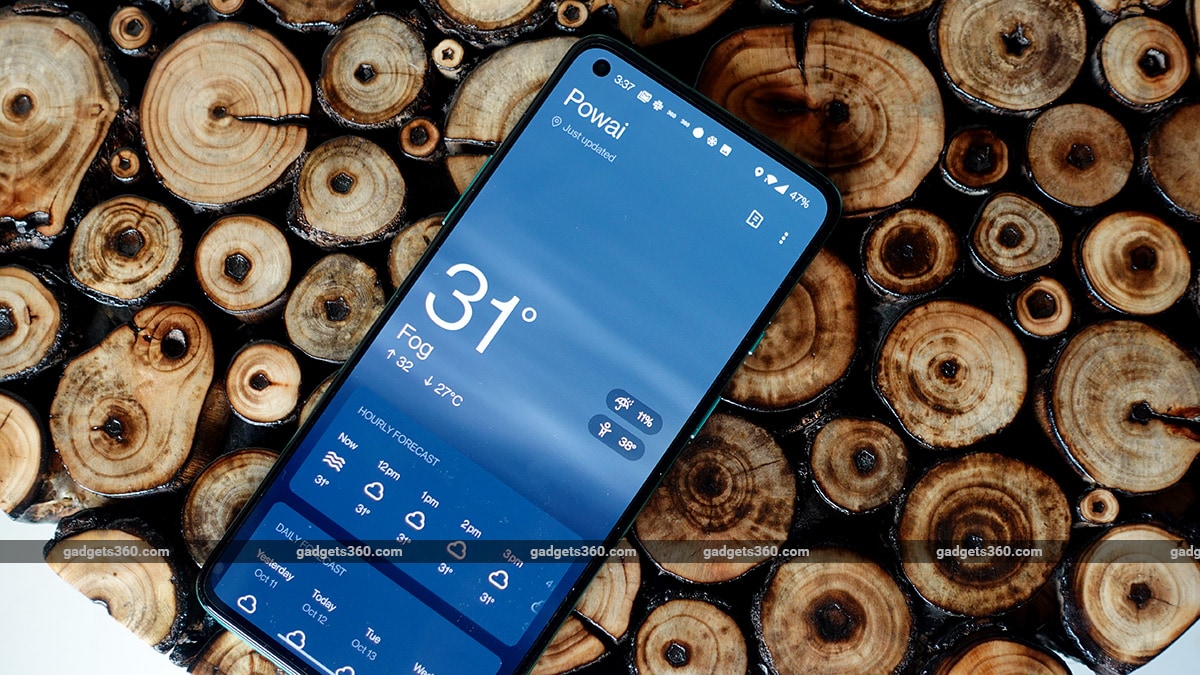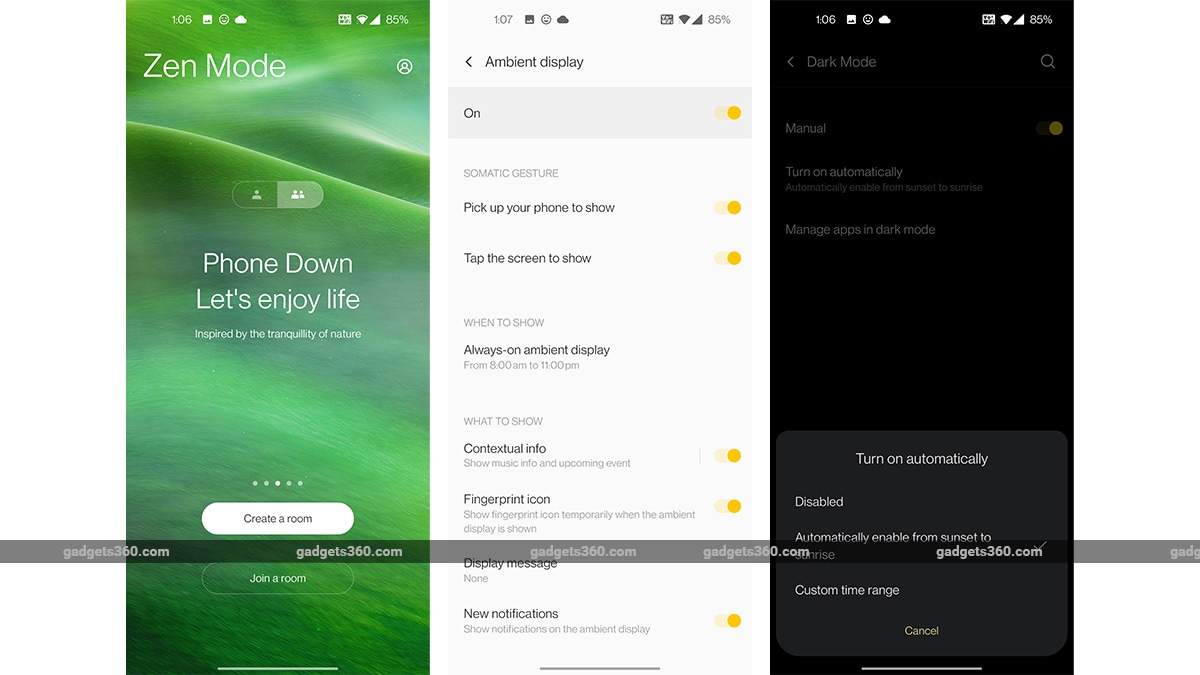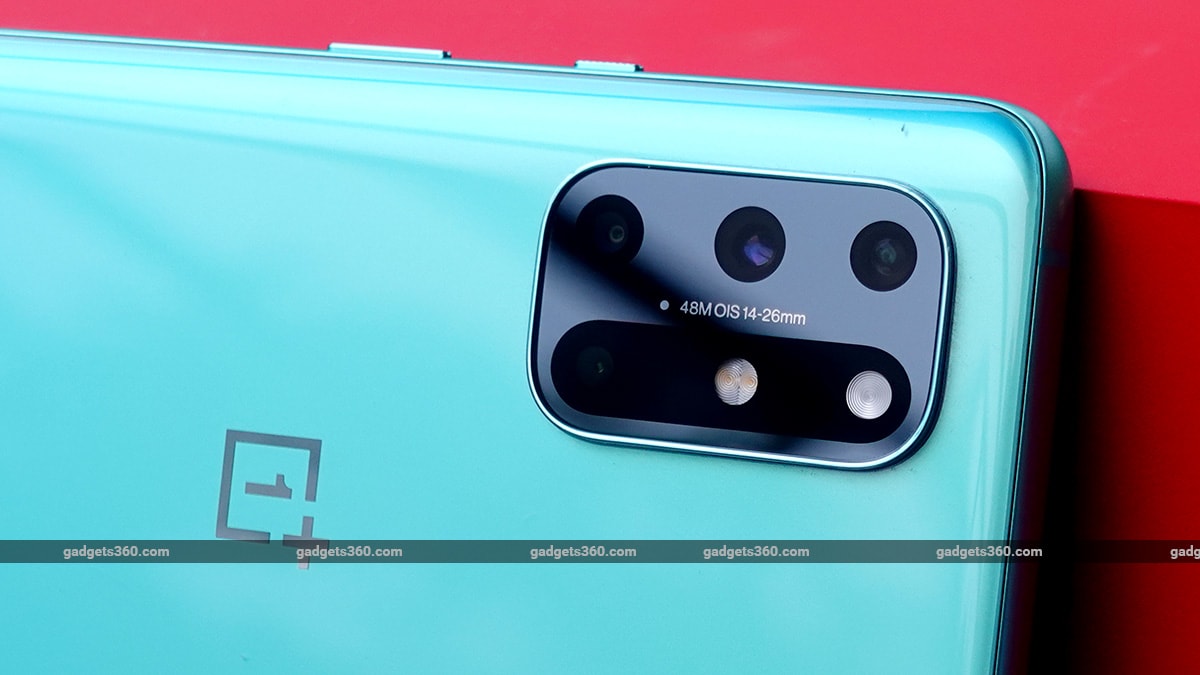It’s customary now to expect a ‘T’ series smartphone from OnePlus at this time of year. These phones generally have better features and tweaked designs, based on customer feedback and also simply to stay relevant till the next generation arrives. That might be more important than ever with this generation – for the OnePlus 8 (Review) series which launched earlier this year, OnePlus put everything it had into the OnePlus 8 Pro, leaving the vanilla OnePlus 8 feeling a bit bland in comparison.
OnePlus has officially launched the 8T, which as expected, features a tweaked design and upgraded specifications in an effort to make the non-Pro version more appealing. OnePlus isn’t refreshing the 8 Pro (Review) this year, which is fine if you ask me, since there isn’t a whole lot that needed changing.
If you were disappointed by the OnePlus 8 and were holding out for the 8T, should you buy it? Let’s find out.
OnePlus 8T design
The OnePlus 8T continues to feature an aluminium frame with a glass back, but the design is very different compared to the OnePlus 8. The sides of the display aren’t curved anymore, which makes the front look less striking, but it’s definitely more practical. It’s easier to see and interact with content at the edges of the display. Plus, there’s no vignetting effect which is typically seen on curved-edge displays. The second thing I noticed is that the OnePlus 8T is heavier (188g vs 180g) and thicker (8.4mm vs 8mm) compared to the 8. The exact reasons are unclear but this new model feels top-heavy even without a case. Prolonged one-handed use can get fatiguing quickly.
The new Aquamarine Green colorway looks great, and despite it having a glossy finish, fingerprints aren’t a big problem. The OnePlus 8T also comes in a Lunar Silver colorway, which is said to have a matte-frosted finish. The camera module is shifted to the left instead of being in the middle, and its rounded corners match the softer contours of the rest of the phone.

The OnePlus 8T comes in this new Aquamarine Green colorway
OnePlus has made some subtle improvements to the display too. It’s the same size and resolution as that of the OnePlus 8, at 6.55 inches and full-HD+, but it now supports a 120Hz refresh rate just like the 8 Pro. OnePlus claims the touch sampling rate has also been bumped up to 240Hz (from 180Hz on the 8), for better touch response. The display is also HDR10+ certified, and has a JNCD colour accuracy rating of under 0.55 as well as a maximum brightness of 1,100nits. OnePlus says the 8T has a slimmer chin since the display connector now bends behind the panel. I don’t see much of a difference (if any) when comparing the 8T and the 8 side by side. Finally, there’s a cutout in the upper-left corner for the single selfie camera.
The button layout will be familiar to OnePlus users. The power and volume buttons sit on opposite sides of the frame, there’s an alert slider for switching between ringer profiles, a USB 3.1 Type-C port on the bottom, and no headphone jack. The OnePlus 8T has a dual-SIM tray, but no option to increase storage.
The OnePlus 8T ships with the usual set of accessories — a data cable, charger, SIM eject tool, sticklers, silicone case, and user guides. One big change this time is the type of charger you get. It’s a 65W charger which OnePlus calls Warp Charge 65, which we’ll talk about later.
The new design of the body and display make the OnePlus 8T look good, and a 120Hz refresh rate is always welcome, but that’s the extent of this model’s physical upgrades. It still doesn’t have an IP rating or support wireless charging, which is disappointing.

The OnePlus 8T has a flat display on all sides, much like the OnePlus Nord
OnePlus 8T software
Before we dive into the OnePlus 8T’s performance, let’s take a look at its software which is also new. The OnePlus 8T runs OxygenOS 11 out of the box. This is the latest version of the company’s custom skin, and is based on Android 11. OnePlus has already begun rolling out this update to the OnePlus 8 and 8 Pro.
OxygenOS 11 features a new “bold” design, taking a cue from Samsung’s One UI. Most of the stock OnePlus apps now show their names in big, bold letters when you open them, and this shrinks to a regular size as you scroll down. You can see this across most of OnePlus’ stock apps such as Clock, Settings, Notes, Recorder, Gallery, etc, but not the File Manager app for some reason.
A quick swipe down on the home screen brings up the OnePlus Shelf, which shows recently launched apps and some contextual information from apps. This gesture can easily be changed to pull down the notification shade instead. There’s a proper Dark Mode setting now, which can be scheduled and can work independent of the theme you’ve set. OnePlus has also finally added a proper Always-On-Display (AOD) feature too. The new Insight AOD is interesting as it shows you how many times you’ve unlocked your phone. OnePlus says it will be adding more features to its stock apps and the AOD through a software update in November.

OxygenOS 11 on the OnePlus 8T features a new Zen Mode (left), always-on display (centre), and proper Dark Mode (right)
The OnePlus 8T features Google’s stock dialler and messages apps, just like the OnePlus Nord. Interestingly, the OnePlus 8 and 8 Pro should continue with OnePlus’ respective apps even after the Android 11 update. OnePlus has also refreshed its Zen Mode wellness feature, which now features soothing themes and lets you share your digital detox experience with other OnePlus users.
OnePlus 8T performance
OnePlus usually uses Qualcomm’s slightly speedier ‘+’ SoC variants for its refreshes but sadly, we have no such luck with the OnePlus 8T. It continues to sport the standard Qualcomm Snapdragon 865 SoC. It will be available in two configurations at the time of launch — 8GB of RAM and 128GB of storage for Rs. 42,999, and 12GB of RAM and 256GB of storage for Rs. 45,999. I have the higher-end variant with me.
The OnePlus 8T uses UFS 3.1 flash storage, compared to UFS 3.0 in the OnePlus 8. According to the Androbench test, though, there doesn’t seem to be a big difference in read/write speeds. However, the OnePlus 8T still uses LPDDR4X RAM and not DDR5 RAM like in the OnePlus 8 Pro.
Other features include an in-display fingerprint sensor, stereo speakers with Dolby Atmos, face recognition, 5G, Wi-Fi 6, Bluetooth 5.1, and NFC. The OnePlus 8T also supports multiple satellite navigation systems and the expected suite of sensors, plus a flicker detection sensor in the camera module.

The OnePlus 8T (centre) delivers equally impressive performance as the OnePlus 8 (right) and 8 Pro (left)
I’ve been using the OnePlus 8T quite extensively for about a week, and so far, performance has been nothing short of amazing. The weight of the phone takes a bit of getting used to, and if you plan on using one of OnePlus’ cases, the phone will be even bulkier. On the other hand, the display looks superb, with punchy colours and plenty of options to calibrate it to your liking. The 120Hz refresh rate makes every little system animation and gesture feel snappy and responsive. None of the games I tested were able to take advantage of the 120Hz display at the time of this review, but OnePlus says it will be adding 90fps support for Fortnite soon via an update.
Speaking of games, everything from Asphalt 9: Legends to Battle Prime ran very well, with smooth, consistent frame rates. The top of the frame, above the earpiece, gets a bit hot when gaming but the rest of the frame and the back don’t heat up as much. The stereo speakers are loud and sound is clear. HDR10 videos looked great when played from YouTube or locally. Netflix wasn’t able to detect the OnePlus 8T display’s HDR capability, but that should be easy to fix with an update.
Fingerprint and face recognition worked swiftly for unlocking the phone. I found the in-display fingerprint sensor to be quick, and almost never encountered a misread. Face recognition also worked well, although I wish there was a ‘raise-to-wake’ option for a more seamless experience.

The new Warp Charge 65 power adapter can be used to fast charge other phones and laptops too
OnePlus has padded the 8T with a slightly larger 4,500mAh battery, compared to the 8’s 4,300mAh. More importantly, this phone supports much faster charging. The OnePlus 8T is the first OnePlus device to support Warp Charge 65, which is OnePlus’ trademark. You get a slightly redesigned charger with a USB Type-C output.
I managed to charge the 8T it from zero to about 72 percent in half an hour, and it took only about 15 minutes more to charge fully. Interestingly, unlike the company’s previous offerings, the Warp Charge 65 charger also supports USB Power Delivery standard with a range of power output. It can supply up to 30W of power to other OnePlus phones and headphones, and up to 45W of power to MacBooks, iPads, iPhones, and Android phones such as the Samsung Galaxy S20+ (Review).
Fun fact: The Warp Charge 65 technology appears to be similar to what sibling brands Realme and Oppo have been using in their respective phones. The OnePlus 8T will fast charge without any problem when plugged into Realme’s 65W SuperDart charger or Oppo’s SuperVOOC 2.0 fast charger.
Battery life in general is solid. I was easily averaging a day and half of medium to light usage with a bit of gaming and camera testing thrown in too. The OnePlus 8T didn’t do too well in our battery loop test, strangely, running for just 15 hours and 51 minutes.
OnePlus 8T cameras
The OnePlus 8 offered decent camera performance and it seems like OnePlus isn’t changing the formula too much with the 8T. You now get four rear lenses instead of three, but most of the functionality remains the same. The OnePlus 8T continues to use the Sony IMX586 48-megapixel, optically stabilised sensor for its primary camera — a sensor we’ve seen on OnePlus’ 7-series phones, the OnePlus Nord, and even several budget phones such as the Redmi Note 7 Pro from 2019. It’s a good sensor no doubt, but I was expecting something better for the 8T.

The OnePlus 8T has a quad camera setup at the back and a single selfie camera
In addition to that, the OnePlus 8T has a 16-megapixel ultra-wide-angle camera with a 123-degree field of view (FOV), a 5-megapixel macro camera, and a 2-megapixel monochrome camera. The front camera is also still the same 16-megapixel Sony IMX471 sensor used in the 8. The OnePlus 8T boasts of a wider FOV for the ultra-wide camera, compared to its predecessor, and the macro camera has a higher resolution this time around. The white circle at the top of the camera module is the flicker sensor, which should be useful to prevent strobing when shooting under certain types of artificial lighting.
On a bright, sunny day, the OnePlus 8T is capable of capturing some very striking photos. HDR is implemented very well, colours are punchy but not oversaturated, and there’s a good amount of detail in landscape shots even after zooming in. The ultra-wide-angle camera captures good colours too, albeit with slightly weaker details. Colours in photos can look heavily oversaturated on the phone’s display, depending on the screen calibration used, so that’s something to keep in mind. Close-ups pack in good details too – autofocus is quick and photos have a pleasing background blur effect.
OnePlus 8T main camera sample (tap to see larger image)
OnePlus 8T wide-angle camera sample (tap to see larger image)
OnePlus 8T close-up camera sample (tap to see larger image)
The macro camera of the OnePlus 8T is a slight improvement over that of the 8, but it’s still no match for 8 Pro’s macro implementation. Portrait mode could use a lot more work. Skin tones on human subjects often looked completely off, with unnatural skin smoothing being applied as well, even with the beauty filter disabled. Shots of still objects fared better in this respect.
OnePlus 8T macro camera sample (tap to see larger image)
OnePlus 8T portrait camera sample (tap to see larger image)
I didn’t find much use for the monochrome camera, and you won’t either unless you’re into black-and-white photography. It’s only used when you choose the last ‘Mono’ filter in Photo mode. It’s still the primary 48-megapixel camera that’s capturing the photo, so I’m not sure why a separate sensor and lens were needed just to apply this effect.
Daylight selfies look good, with plenty of detail and fairly natural skin tones. Portrait mode attempts to blur the background behind you but the result isn’t always perfect. Image quality takes a big hit in low light. There’s no Nightscape to help improve the exposure, sadly, but you can use a screen flash. One thing I noticed is that if you have Vision Comfort (the OxygenOS blue light filter feature) enabled, the screen flash will have a heavy yellow tone, which results in red skin tones in selfies. You’ll need to turn this off in order to get more natural skin tones with the screen flash.
OnePlus 8T selfie camera sample (tap to see larger image)
OnePlus 8T low-light close-up sample (tap to see larger image)
OnePlus 8T low-light camera sample with Nightscape (tap to see larger image)
Thankfully, the rear cameras fare much better in low light. Even without Nightscape, the main camera picks up a decent amount of detail and suppresses noise very well. Of course, finer textures on objects aren’t as sharp as they would be if shot in the daytime, but this is only noticeable once you magnify an image. The ultra-wide-angle camera does a good job suppressing noise at night too, but details and exposure are a lot weaker. Nightscape helps fix the exposure a bit, making objects slightly more visible in darker areas. I found this to be more effective with the main camera than the wide-angle one.
The OnePlus 8T has solid video recording capabilities. You can record at 4K 30fps and switch between the primary and ultra-wide-angle cameras. The quality is very good in daylight, except for a mild shimmer in the footage when walking. The main camera can record up to 4K 60fps, but you can’t switch sensors at this framerate. The selfie camera is still limited to 1080p recording but there’s stabilisation and it works well.
OnePlus has added some new video features to the 8T’s camera app — Video Focus Tracking, Video Portrait, and Video Nightscape. The first one is essentially focus tracking, and it worked pretty well in my experience. The OnePlus 8T is able to continue tracking an object even if it drops out of the frame and comes back. Video Portrait creates a depth effect around your subject, but this only works for humans. Finally, Video Nightscape offers a brighter exposures in low light compared to standard video mode, but the resolution is limited to 1080p.
Low-light video quality was still average at best, much like with the OnePlus 8. Objects looked grainy and there was a constant jitter from the moment I began walking about. The ultra-wide-angle camera fared pretty poorly at night, producing almost unusable footage.

The OnePlus 8T might not be a huge upgrade over the 8, but it represents good value for money
Verdict: Should you buy the OnePlus 8T?
After the slightly underwhelming OnePlus 8, all eyes will be on the OnePlus 8T to fix many of its shortcomings. Well, the OnePlus 8T does introduce many changes, but still leaves out many of the features we were hoping to see such as an IP rating or even wireless charging. OnePlus’ decision to leave these features out is quite frustrating, but also perhaps understandable, since you don’t want a new phone to steal the thunder away from an existing flagship. This is what happened to the OnePlus 8 when the Nord was launched, and I don’t think OnePlus wants to make the same mistake again.
This year’s ‘T’ refresh is not as big as, say, what the OnePlus 7T was to the OnePlus 7. Had OnePlus launched an 8T Pro model, we might have seen upgrades to the SoC and cameras on the 8T. As it stands, the OnePlus 8T is still a solid offering and does everything you would expect from a mid-tier flagship. It looks great, it has a superb display, the cameras are decent, and battery life is solid. It also doesn’t hurt to have super-fast 65W charging.
As for value, the OnePlus 8T starts at Rs. 42,999 for the base variant, and the higher-end 12GB RAM one I have is priced at Rs. 45,999. Compared to the OnePlus 8 equivalent variants, the 8T offers better value as you get more features and better specifications for less. However, the starting price is slightly higher. There’s no reason to buy the OnePlus 8 anymore (if you haven’t already), unless its price is permanently reduced by quite a lot.
Keep in mind that the competition is fierce too. There’s the Samsung Galaxy S20 FE at Rs. 49,999 and with festive sales on the horizon, there are plenty of good deals to look forward to as well.
Is OnePlus 8T the best ‘value flagship’ of 2020? We discussed this on Orbital, our weekly technology podcast, which you can subscribe to via Apple Podcasts, Google Podcasts, or RSS, download the episode, or just hit the play button below.








